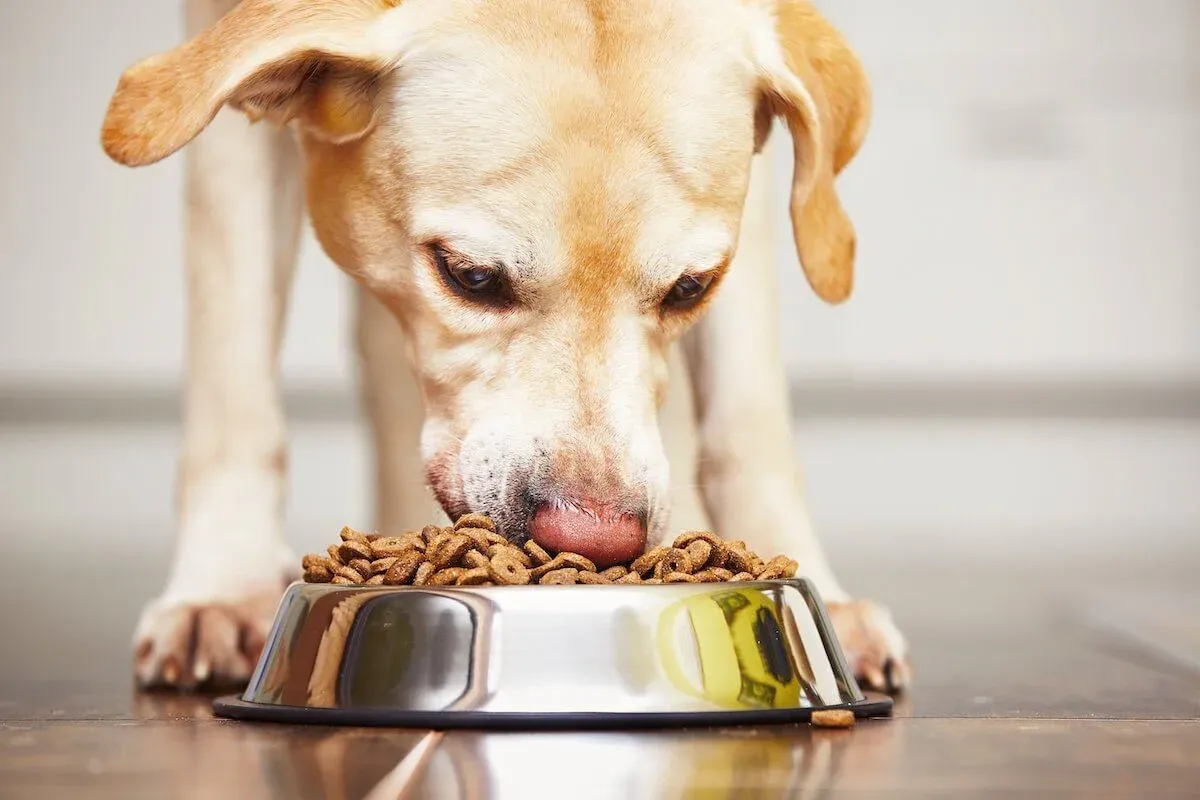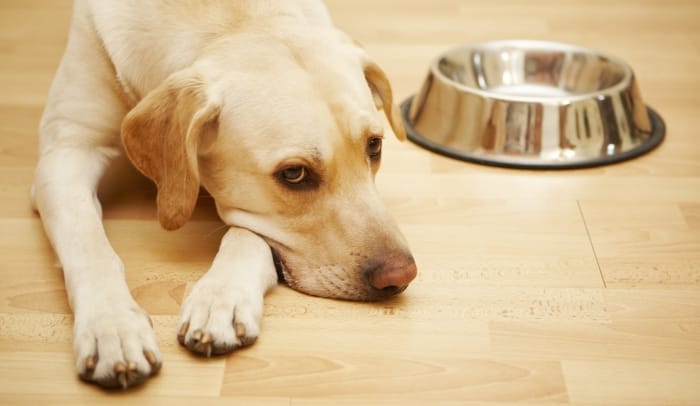Dogs are known for being loyal and protective of their owners. However, some dogs may take their protective instincts to the extreme and exhibit resource guarding behavior. Resource guarding occurs when a dog becomes possessive of something, such as food, toys, or even a favorite human being.

In cases of dog resource guarding a favorite human being, the dog may become aggressive or territorial when someone approaches or interacts with their chosen person. This behavior can be problematic and even dangerous, especially if the dog perceives the person as a threat. It is important for dog owners to understand this behavior and take steps to prevent it from escalating.
Understanding Resource Guarding
Definition and Manifestation
Resource guarding is a common behavior among dogs, which involves protecting their valued resources from other dogs or humans. These resources can include food, toys, bones, and even people. Dogs that resource guard a favorite human being may show signs of aggression towards other people who approach or interact with that person.
The manifestation of resource guarding behavior can vary from dog to dog. Some dogs may growl, snarl, or snap at anyone who tries to approach their favorite human. Others may become tense, stiff, or even block the person from others. In severe cases, dogs may even bite to protect their resource.
Psychology Behind Resource Guarding
Resource guarding behavior is believed to be an evolutionary adaptation that has helped dogs survive in the wild. In the wild, resources such as food and shelter are scarce, and dogs must compete with other dogs to survive. Dogs that were successful in guarding their resources were more likely to survive and pass on their genes.
In domesticated dogs, resource guarding behavior is often a result of fear, anxiety, or insecurity. Dogs that have had negative experiences with people or other dogs may be more likely to resource guard. Additionally, dogs that have not been properly socialized or trained may also exhibit resource guarding behavior.
Overall, understanding resource guarding behavior is important for dog owners to ensure the safety of both their dogs and the people around them. By recognizing the signs and causes of resource guarding, owners can take steps to prevent or manage this behavior.

Resource Guarding Towards Humans
Dogs can develop resource guarding behavior towards humans. This occurs when a dog perceives a human as a valuable resource and feels the need to protect them from other dogs or people.
Signs and Symptoms
Some common signs of resource guarding towards humans include growling, barking, snapping, or biting when someone approaches the human the dog is guarding. The dog may also become tense or stiff when others come near the human, or they may position themselves between the human and the perceived threat.
Other signs may include the dog refusing to move away from the human or becoming agitated when the human interacts with others. In severe cases, the dog may become aggressive towards anyone who approaches the human, even their own family members.
Assessing Severity
It is important to assess the severity of the resource guarding behavior towards humans. Mild cases may only require management techniques, such as teaching the dog to move away from the human on command or keeping the dog on a leash when around others.
However, more severe cases may require professional intervention, such as working with a certified dog behaviorist. In extreme cases, the dog may need to be rehomed to a household without other dogs or children.
Owners should always prioritize the safety of themselves and others when dealing with resource guarding behavior towards humans. Early intervention and proper management can help prevent the behavior from escalating and ensure a happy and safe home for everyone involved.
Prevention Strategies
Early Socialization
One of the most effective ways to prevent resource guarding in dogs is through early socialization. This involves exposing the dog to a variety of people, animals, and situations from a young age. By doing so, the dog learns that new people and experiences are not a threat and that sharing resources is a normal part of life.
During socialization, it is important to teach the dog basic obedience commands such as "sit," "stay," and "come." This helps to establish a clear hierarchy in the household and reinforces the dog's understanding that the humans are in charge.
Training Against Possessiveness
Another strategy for preventing resource guarding is to train the dog to be less possessive of their favorite human. This can be done through a variety of exercises that teach the dog to associate positive experiences with sharing resources.
One such exercise is to play a game of "trading" with the dog. This involves giving the dog a high-value item such as a toy or treat and then offering them an even better item in exchange. Over time, the dog learns that giving up their possessions results in something better and becomes less possessive.
It is also important to establish clear boundaries with the dog. This means not allowing them to sleep in the bed, sit on the couch, or otherwise claim ownership over human spaces. By establishing these boundaries, the dog learns to respect the humans as leaders and is less likely to become possessive.
Intervention Techniques

Desensitization and Counterconditioning
One of the most effective ways to address dog resource guarding towards a favorite human being is through desensitization and counterconditioning. This technique involves gradually exposing the dog to the presence of the human and rewarding them for calm and non-aggressive behavior.
The first step is to identify the triggers that cause the dog to guard the human. This could be anything from physical touch to the human's proximity. Once identified, the dog is gradually exposed to these triggers in a controlled environment. For example, if the dog guards the human when they are sitting on the couch, the desensitization process could involve having the dog sit on the floor while the human sits on the couch.
During this process, the dog is rewarded for calm behavior with treats or praise. Over time, the dog should learn that the presence of the human does not automatically mean a threat to their resources.
Professional Training and Behavior Modification
If desensitization and counterconditioning do not work or if the dog's guarding behavior is severe, it may be necessary to seek the help of a professional dog trainer or behaviorist. These professionals can assess the dog's behavior and develop a customized training plan to address the issue.
Behavior modification techniques such as positive reinforcement training and clicker training can be effective in changing the dog's behavior. In some cases, medication may also be prescribed to help manage the dog's anxiety or aggression.
It's important to note that intervention techniques should only be carried out under the guidance of a professional. Attempting to address resource guarding on your own can be dangerous and may worsen the dog's behavior.
Safety Considerations
When dealing with a dog that resource guards a favorite human being, safety should always be a top priority. Here are some important considerations to keep in mind:
Managing Interactions with Strangers
Dogs that resource guard their favorite human may become aggressive towards strangers who approach them while they are in close proximity to their person. It is important to manage these interactions carefully to avoid any potential incidents.
One effective way to manage interactions with strangers is to use a visual barrier such as a baby gate or a crate to separate the dog from the stranger. This will allow the dog to observe the stranger without feeling threatened, and will provide a safe distance between the two.
It is also important to teach the dog a "go to place" command, which will allow them to move away from the person they are guarding and go to a designated safe spot in the house. This will help to prevent any potential incidents and will give the dog a sense of security.
Children and Resource Guarding Safety
Children should always be supervised when interacting with a dog that resource guards their favorite human. It is important to educate children on the signs of resource guarding and to teach them how to interact with the dog in a safe and respectful manner.
Children should be taught to avoid approaching the dog when they are in close proximity to their favorite human, and should never attempt to take something away from the dog that they are guarding.
It is also important to teach children to respect the dog's personal space and to avoid hugging or petting the dog when they are in a heightened state of arousal.
By following these safety considerations, it is possible to manage resource guarding behavior in dogs and to keep both the dog and their favorite human safe and happy.

Legal and Ethical Implications
Liability for Owners
When a dog resource guards a favorite human being, the owner may be held liable for any injuries caused by the dog. This is because the owner has a duty to control their dog and prevent it from causing harm to others. If the owner knows or should have known that their dog has a tendency to resource guard, they may be held liable for any injuries caused by the dog's behavior.
In addition, if the owner fails to take reasonable steps to prevent their dog from resource guarding, they may also be held liable. This could include failing to train the dog, failing to supervise the dog, or failing to warn others about the dog's behavior.
Understanding Dog Bite Laws
Dog bite laws vary by state, but in general, owners are held strictly liable for any injuries caused by their dog. This means that the owner is responsible for any injuries caused by their dog, regardless of whether or not they were negligent.
However, some states have a "one bite" rule, which means that the owner is only held liable if they knew or should have known that their dog had a tendency to bite or be aggressive.
It is important for owners to understand the dog bite laws in their state and take steps to prevent their dog from biting or causing harm to others. This could include training the dog, using a leash or muzzle, or seeking professional help if the dog has a history of aggression.
Overall, owners have a legal and ethical responsibility to prevent their dog from resource guarding and causing harm to others. By taking proactive steps to train and control their dog, owners can help prevent injuries and avoid legal liability.
Conclusion
In conclusion, managing resource guarding in dogs is crucial for safety and well-being. Early socialization, proper training, and professional help can mitigate this behavior. Owners should recognize signs like growling or snapping and address them with techniques like desensitization and counterconditioning. Establishing boundaries and providing positive reinforcement are key.
Safety is paramount, especially with children and strangers, and owners must manage interactions carefully. Understanding the legal and ethical responsibilities of dog ownership is also important to prevent harm and liability. With consistent effort and appropriate strategies, resource guarding can be effectively managed, ensuring a safe and harmonious relationship between dogs and their human companions.




